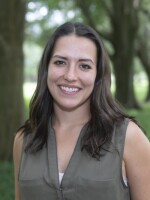In a 5-0 vote, the Sarasota City Commission approved zoning changes that could bring more affordable housing units online through private development.
Under the new rules, if developers mark down 15% of units to be affordable — or available to households earning 80% to 120% of the area’s median income — the city will allow them to build four times the number of units typically allowed for downtown-zoned districts.
Here are the zone districts impacted:
- Downtown Neighborhood Edge (DTNE)
- Downtown Edge (DTE)
- Downtown Core (DTC)
- Downtown Bayfront (DTB)
View a map of Sarasota’s zone districts.
View approved text: ORDINANCE NO. 23-5487
At 15%, Sarasota's incentive threshold is far lower than the state’s recommendation under the new Live Local Act, which mandates “density bonuses” and other easements by local governments if 40% of units are affordable.
“The Live Local state legislation came out and introduced some new wrinkles to this,” city planner Steve Cover said. “There were some questions as to whether our percentage and our approach would be more attractive, and I think that’s a pretty simple answer.”
During a first reading of the new rules on Aug. 7, Cover said the low threshold for required affordable units is designed to be reasonably attractive to a developer looking to build downtown.
"The downtown land is expensive, high-rise constructions is expensive," Cover said. "It's a much bigger challenge in downtown to do projects. And we decided that 15% of the bonus density is what we're recommending today."
During a second and final reading on Sept. 5, the City Commission approved the ordinance in a 5-0 vote.
Although commissioners Jen Ahearn-Koch and Debbie Trice voted in favor of the measure, they expressed frustration about eleventh-hour changes to the text of the ordinance that made community workshops for new development using the density bonuses "voluntary," rather than "mandatory."
Trice also voiced disapproval over the low rate, at 15%, of required affordable units but conceded that "the need is so great" for affordable housing that she can't stand in the way of an imperfect solution.
Earlier this month, senior city planner Briana Dobbs said the changes come as the lack of attainable housing is having a clear, negative impact on the local economy.
The median rent for a one-bedroom apartment in Sarasota is roughly $2,000, or more than a third of the monthly income for the city’s many middle-income earners.
“When we keep in mind … what an individual as a firefighter or teacher can afford — they definitely can’t afford to have a one-bedroom apartment within the City of Sarasota,” Dobbs said.
The new incentives are in line with the city's plan to "maintain and attract moderate and middle-income families" to the region by creating livable neighborhoods and incentivizing the construction of affordable housing units, according to the Sarasota City Plan.
Gabriella Paul covers the stories of people living paycheck to paycheck in the greater Tampa Bay region for WUSF. She's also a Report for America corps member. Here’s how you can share your story with her.





